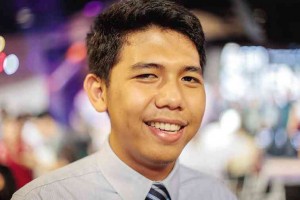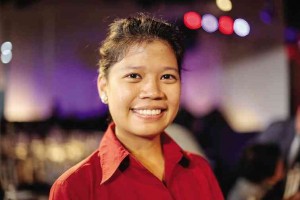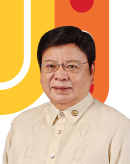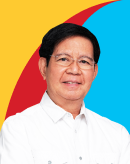Young scientists generate solutions to current problems
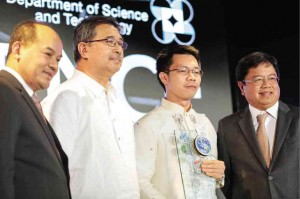
ALEXANDER John Cruz (third from left) with BPI Foundation executive director Florendo Maranan, Science Undersecretary Fortunato de la Peña and BPI president Cesar Conzing
Three budding Filipino scientists received recently the BPI-DOST Science Awards for projects designed to address some of the country’s needs.
Chemical engineering student Alexander John Cruz of the University of the Philippines (UP) received the best project of the year award for “Design, Optimization and Field Testing of a Plasma-Enhanced Optic Fiber Reactor for Hydrogen Production via Visible Light-Driven Photocatalytic Water-Splitting.”
First runner-up Jessa Marie Makabenta, a chemistry student at UP Los Baños, used two of the Philippines’ abundant resources—shrimps and coconuts—for “Sodium Caseinate Encapsulation of Coconut Oil-Extracted Astaxanthin from Shrimp (Penaeus monodon) Wastes for Enhanced Stability, Bioavailability and Bioactivity and Controlled Release.”
Kevin Colina, a computer science senior at the University of San Carlos (USC) in Cebu City, was third with “Electronic-Storybook Creator with Cebuano Natural Language Processing-Based Animation for Kindergarten Educators.”
The three were chosen from seven finalists representing, aside from UP and USC, Ateneo de Davao University, Ateneo de Manila University (ADMU), De La Salle University, Saint Louis University, Silliman University, University of Santo Tomas and Xavier University.
Cruz developed a photocatalyst using sun and water to deal with an energy crisis.
“The idea came from my adviser, Dr. Rizalinda de Leon [of the UP College of Engineering]. We [decided] to continue a very successful study from a former student of the department,” Cruz said.
He said he expected the renewable energy generated by the system to be a good long-term alternative.
Makabenta extracted astaxanthin, a natural antioxidant, from shrimp waste using virgin coconut oil.
“I chose virgin coconut oil because its extraction was simple and it would promote a local product … The country is a major [source of shrimp]. [The project can help] increase the profitability of the industry,” Makabenta said.
She said her award “serves as an inspiration and an affirmation that [what] I am doing is of potential help to society.”
Colina’s innovation would help kids understand stories through a more creative approach.
He said Cebuano stories would be uploaded to the system, which would produce the animation. “There are already animations in the database,” he said.
Colina said using his native language would help educators add their own original stories.
Bank of the Philippine Islands (BPI) Foundation executive director Florendo Maranan noted that the winning entries in the 25-year-old awards were technically and economically feasible. BPI partnered with the Department of Science and Technology (DOST) for the awards program eight years ago.
He said students “are becoming more aware of the problems faced by society, like energy management, health and food security.”
The awarding ceremony at the Mind Museum in Bonifacio Global City was attended by 2001 winner and ADMU class valedictorian Roselle Ambubuyog, the first blind student to use speech-and-Braille portable computers in her studies. She is currently an access technology specialist for various software and hardware companies in Europe and North America.
DOST science scholars
Meanwhile, DOST’s Science Education Institute (SEI) has awarded scholarships to 3,982 high school graduates.
Scholars may pursue four- or five-year undergraduate programs in priority science and technology (S&T) fields.
A total of 500 second year students in DOST-SEI-identified institutions qualified for S&T scholarships for sophomore college students.
Applications for the 2015 S&T undergraduate scholarships will be accepted until Aug. 22 and the scholarship exam will be held on Sept. 21.
Forms may be obtained at SEI or downloaded from www.sei.dost.gov.ph and www.science-scholarships.ph.















